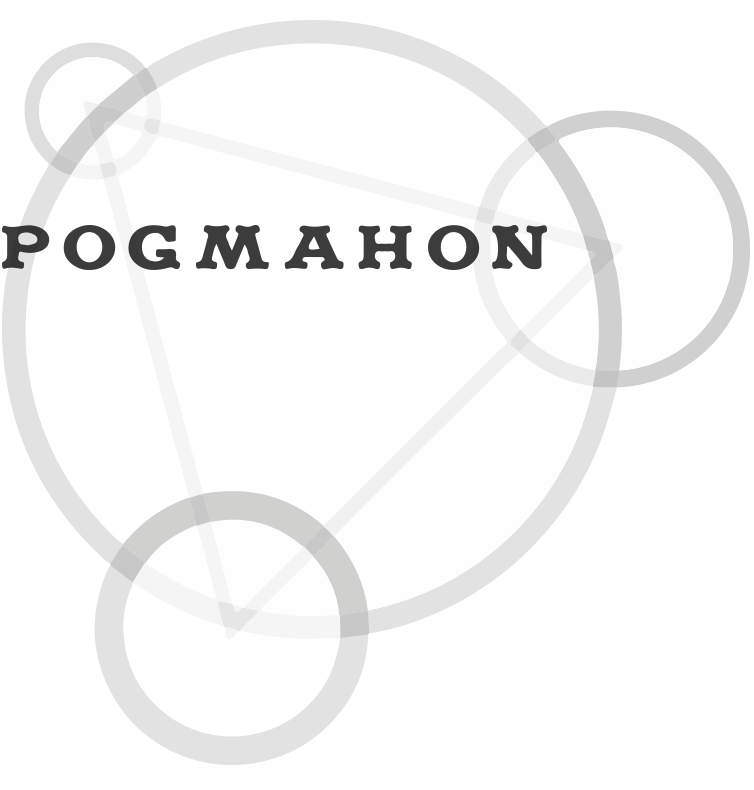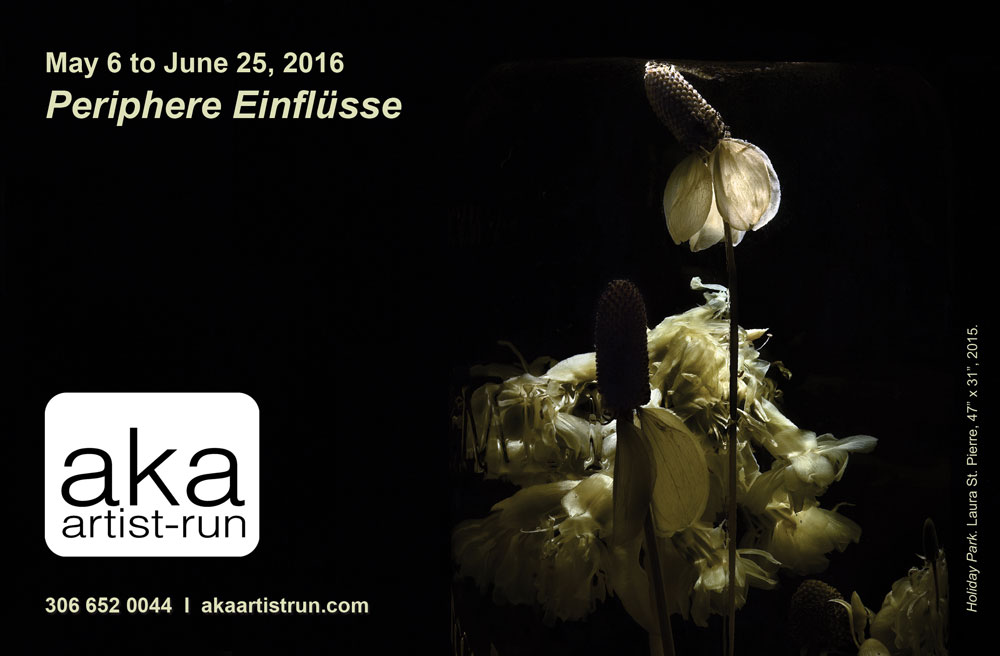EXCHANGE Canada – Austria
Put an ocean and a river between everything, yourself, and home
6. May 2016 Exhibition Launch AKA Saskatoon & Kenderdine Art Gallery
Duration 7.5. – 18.6.2016
Künstler_innen / Artists
Austrian
Maria Grün, Bogomir Doringer & Bernd Oppl, Agnes Hamvas, Michael Koch, Astrid Sodomka, Franz Wassermann
Canadian
Joi Arcand, Heather Benning, Clint Neufeld, Zachari Logan, Laura St. Pierre
Kuratiert von / curated by Denise Parizek
In a geographically unlikely partnership, initiated by Regina-based artist Zachari Logan, AKA artist-run and Schleifmühlgasse 12-14 have developed an exchange project connecting European and Canadian artists working in a variety of mediums. Through an ongoing dialogue, curators Denise Parizek and Tarin Hughes have connected two exhibitions – the first exhibition To space to place at Schleifmühlgasse 12-14, May 2015 – and adjunct programming around the land, water and geographic space. The on-going cooperation brings together artists and curators, who build an international network.
Peripheral Influence is the second project organized between the two artist-run-spaces with a new partner in the Kenderdine Gallery at the University of Saskatchewan. The curatorial premise is inspired by the butterfly effect and the persistent influence of globalization. Curatorial, artistic and theoretical approaches are transformed into visual representations. Diverse perspectives are mirrored by a variety of media: installation, video, drawing, sculpture, performance.
PRESS
http://thestarphoenix.com/entertainment/local-arts/art-column-peripheral-influence
http://www.unframedradio.com/podcast/?name=2016-05-08_2016-04-28_un-framed_laura_st__pierre.mp3
http://www.unframedradio.com/podcast/?name=2016-05-08_2016-05-05_un-framed_denise_parizek_zach_logan_michael_koch.mp3
http://canadianart.ca/news/news-brief-canadians-berlin-biennale/
Pictures of the Exhibitions @ AKA Saskatoon & Kenderdine Gallery Saskatoon
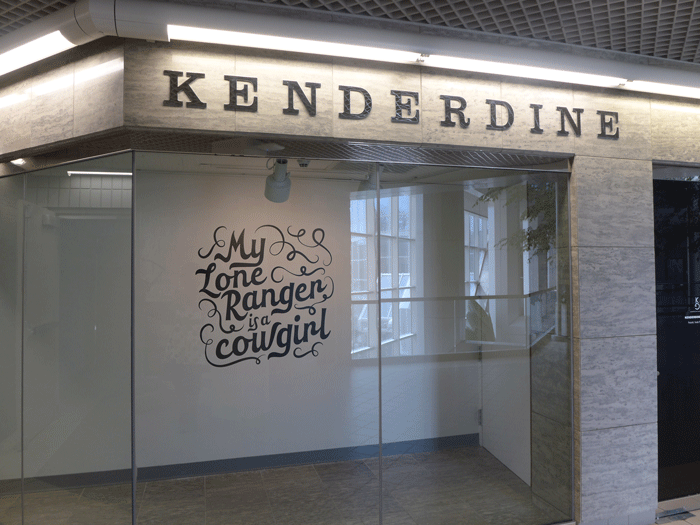
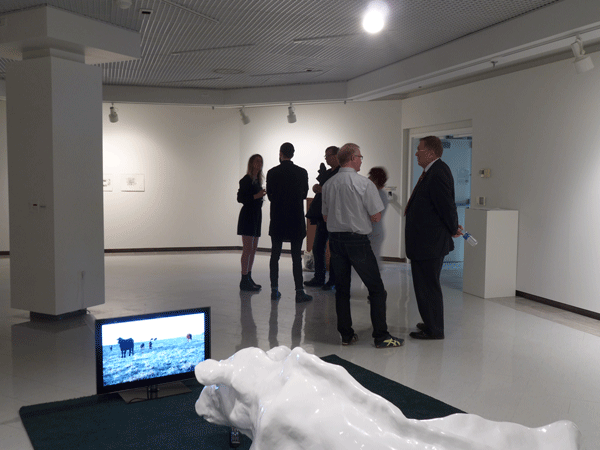
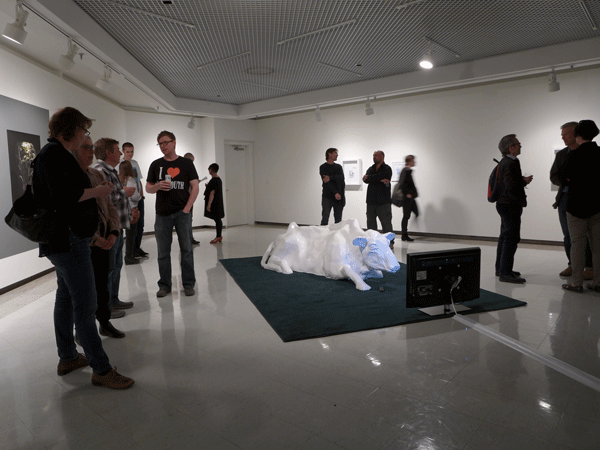
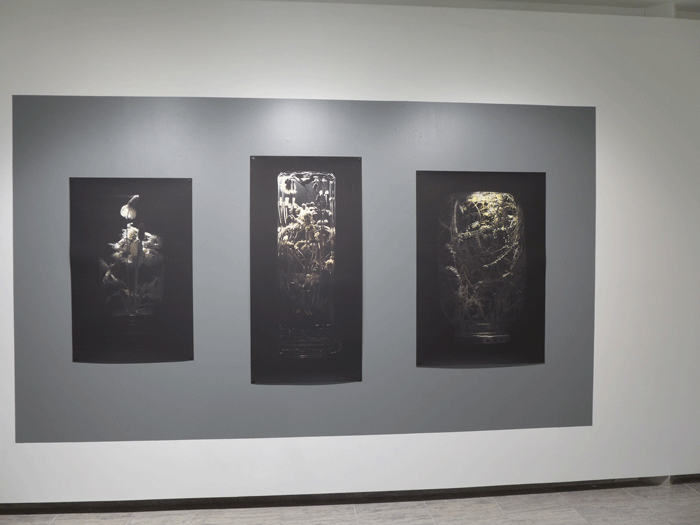
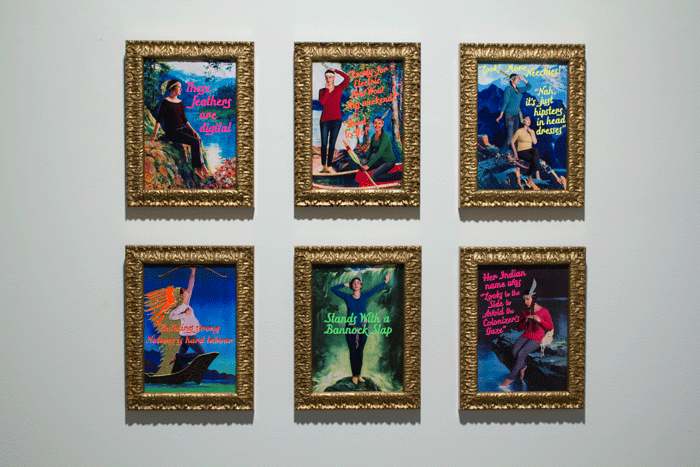
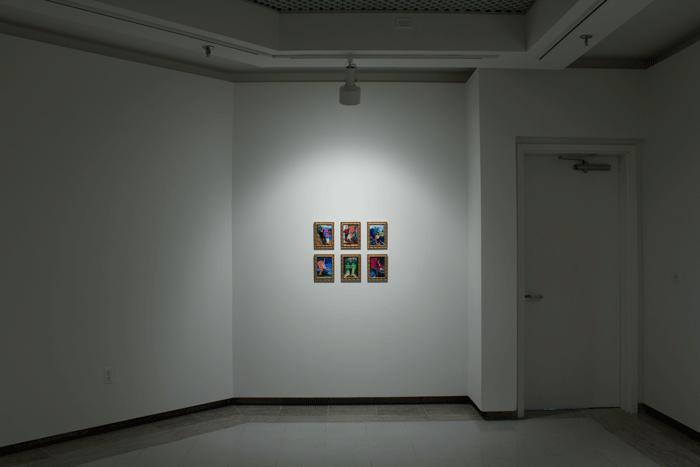
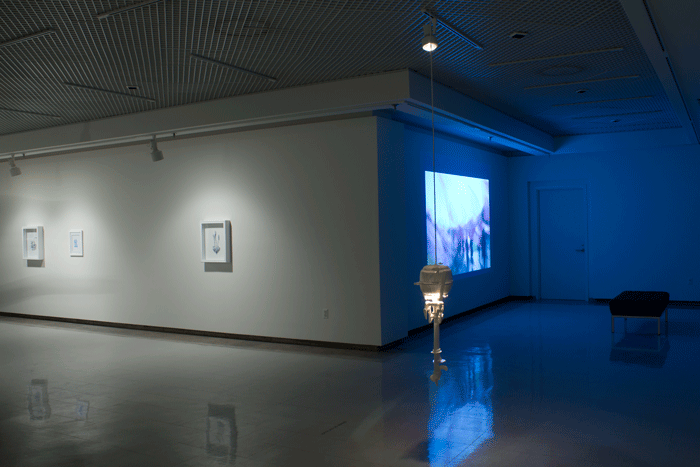
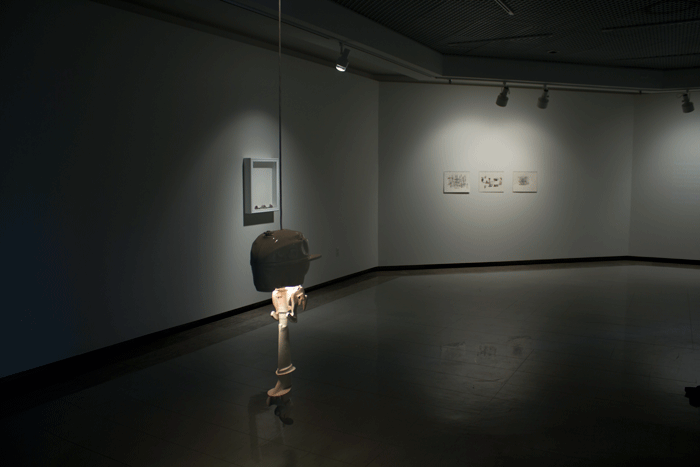
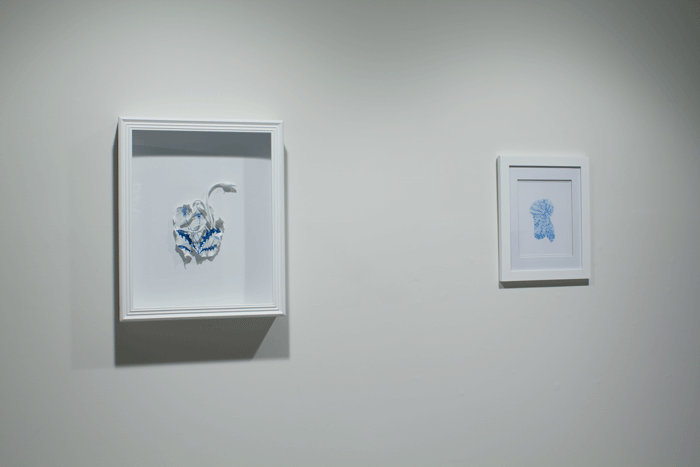

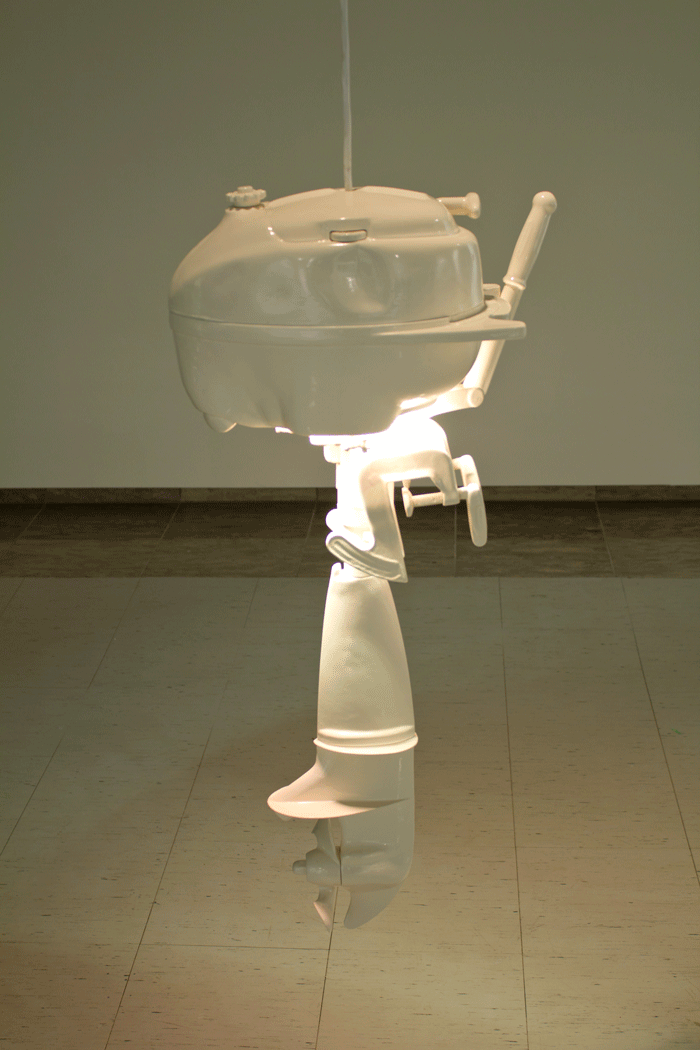
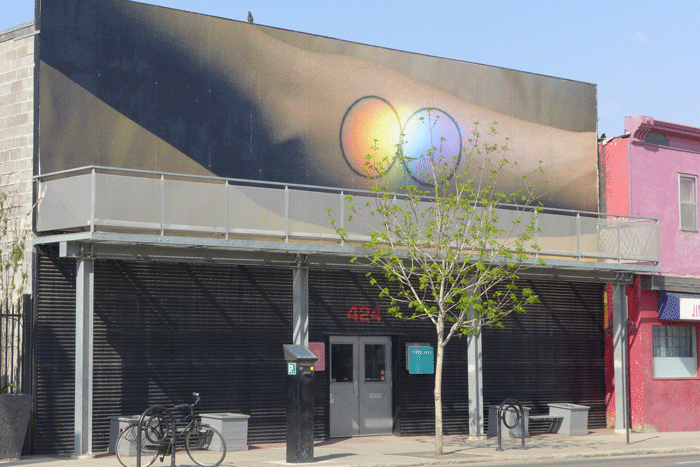
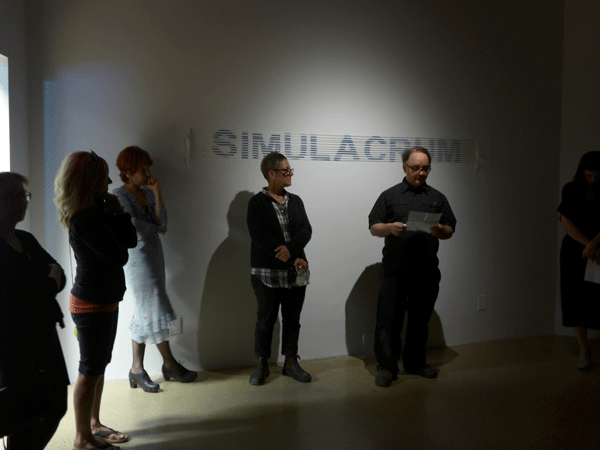
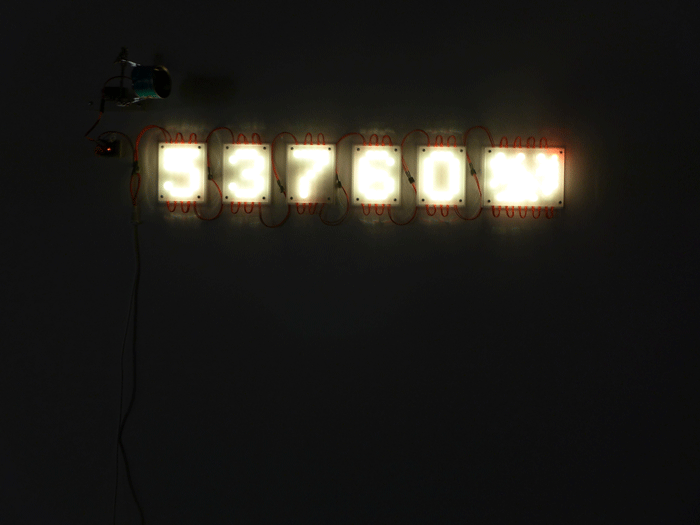
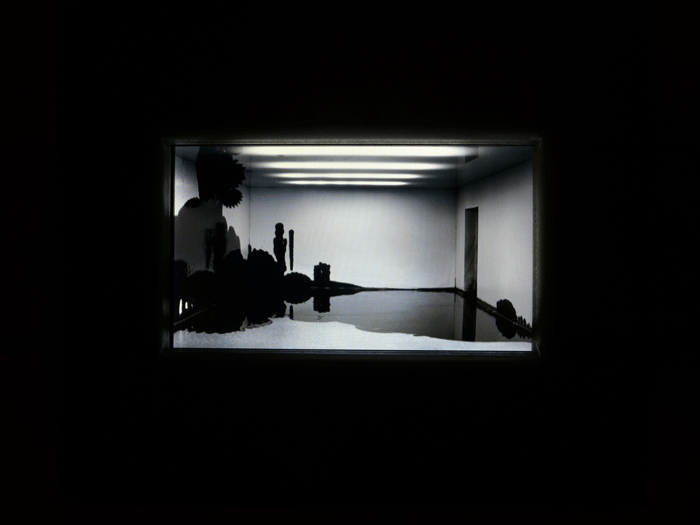
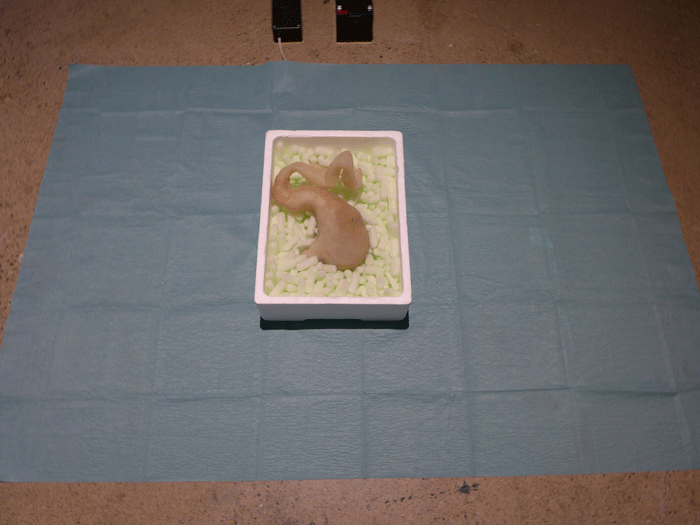
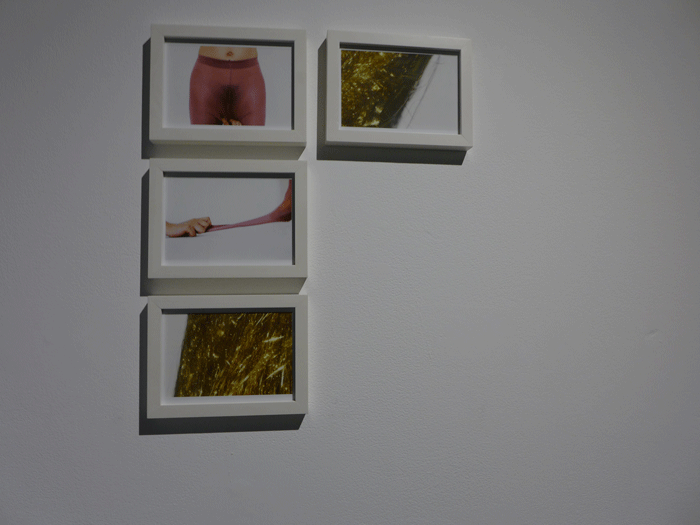
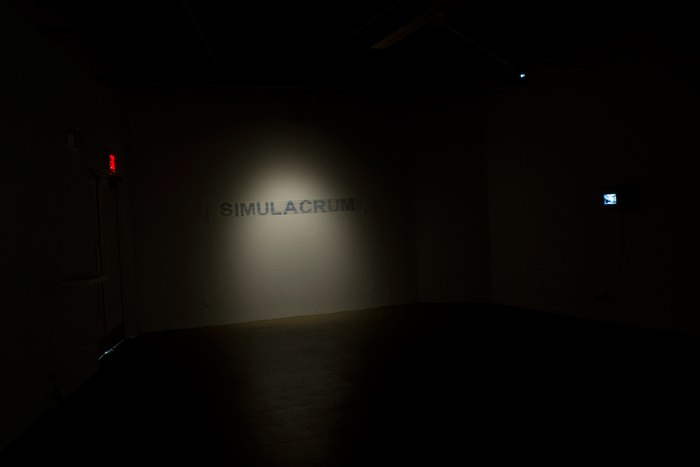
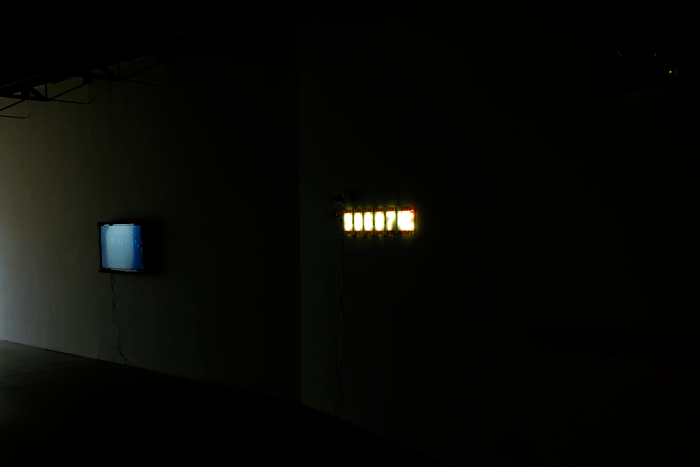
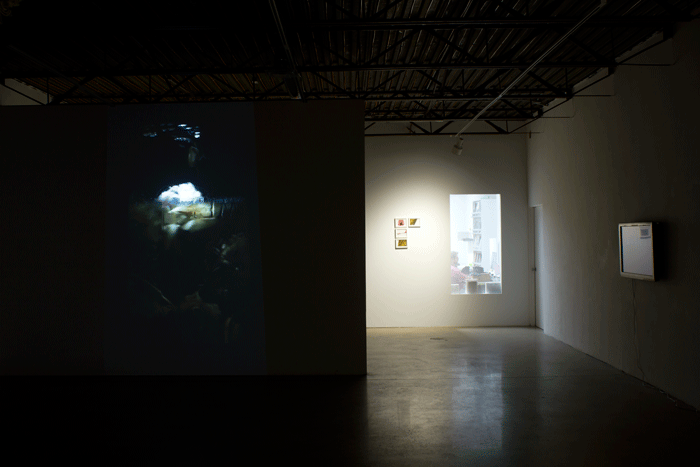
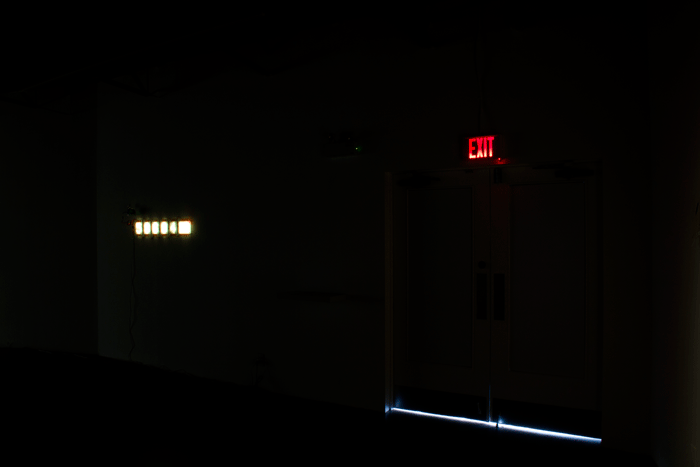
Photo Credits Michael Koch & Denise Parizek 2016 Saskatoon
The Butterfly Effect
The butterfly effect is a concept in which small causes can have large effects. In Chaos Theory the butterfly effect is the sensitive dependence on initial conditions in which a small change in one state of a deterministic nonlinear system can result in large differences in a later state. In my eyes it is a metaphor of influences on all levels and resulting consequences. Particularly in our globalized world, economy and politics influence the standard of living, handling with resources, education and the health system. Free trade agreements are changing the traditions of agriculture to industrial farming, subsequently mutating our food, further on our health. Possibly this development will cause a big financial problem for the national medical care systems in future too.
Influences of nations, principle of equality and human rights, migrants, refugees, religions and believes, data, knowledge, meanings are the most popular issues in current media. Hardship and poverty versus the increasing wealth of a small group of people. The refugee movement through Europe has engendered an inhuman discussion about traditions, religions and cultural distinctions. These kinds of discussions are influencing our daily life and our well known cooperation.
Whistle Blowers started a trend-setting development. They opened the eyes of many of us and pointed out the negative and dangerous aspects of surveillance. The worldwide web influences our education and knowledge, if we are able to use it in a smart way.
Political movements like diem 25 engendered at a glance that our political systems are obsolete. The new Canadian Prime Minister is touching topics like gender and equity.
The leverages initialize a domino effect, at the end all relative important categories from economy to daily life, involving topics of environment protection, education, social systems, same rights to work, to learn, to choose are parts of one chain.
The influence is peripheral and subtle, though irreversible. That fact generates a creative and diverse artistic environment enabling a change of perspectives and tidy up clichés and prejudice. Without arguments and discussions we won’t be able to enhance and we will get stuck in a kind of stagnation or boiling in our own soup of habitually without scrutinizing.
In our increasingly globalized society, the Butterfly Effect is no longer surprising emerged as reality, more than theory. If share prices are falling dramatically on the Tokyo stock exchange this development has consequences for stock exchanges in New York, London and Hong Kong. The deforestation in the Amazonas influences our climate in Europe, melting the ice at the poles or glaciers in the mountains affects the downfall of some islands, like Tuvalu in the Pacific Ocean. The multiple threads of life are woven, how the tapestry of creation is formed.
Curators have the power to affect or change artistic careers as well as factors of the art market. In my opinion we also have the commitment to allude prevailing topics and to inspire educational approach. The inevitability of networking, cooperating and preparing a base of exchange possibilities is one of the fundamental areas of responsibility. The objective of the critical endeavour is to position artistic work internationally.
The record of the Canadian-Austrian meeting in 2015 at Schleifmühlgasse 12-14, Artist Run Space Vienna, depicted the benefits.
To go abroad for presenting an exhibition is kind of a temporary migration, is adapting, working out the differences and finding flexible solutions. My experience in working with artists, curators and institutions from Eastern Europe taught me a lot of cultural diversity and understanding, opened my eyes in case of trouble shooting and provisional arrangement. The confrontations with artists from Romania, Turkey, Slovenia, Serbia, Poland i.e. pointed out the saturated attitude and behavior of our western world. Both, working with countries from the western or the eastern hemisphere lead to misunderstandings – though different ones. Flexibility and adjustment are the most important needed skills in the east, toughness and correctness are the most wanted qualities in the west.
Parts of the good Old Lady Europe are still living in a flexible interpretation of law and order. In comparison younger smart sister Canada has fulfilled an American way of life, like worshipping consensus and avoiding frictions. This phenomenon, which is meanwhile establishing in parts of Europe as well, is quite new for us. Saber rattling is still a tool of negotiating here. In spite of all that differences, it is totally important to try out cooperations with diverse countries and nations and to build clarity of thoughts in building bridges and demolishing borders.
The selection of the Austrian artists should visualize the cultural diversity of Europe on the one hand, the plurality of the Viennese art scene on the other. The artists are born in Austria (Maria Grün, Agnes Sodomka, Bernd Oppl and Franz Wassermann), in Serbia as Hungarian Minority (Agnes Hamvas), in Serbia (Bogomir Doringer) and in Germany (Michael Koch). All of them are living mainly in Vienna even though they are working internationally. Howbeit if the nationality does not mean anything in our society, it was, and hopefully will not be again, one of the reasons of war and activation of refugee development. Due to the formation of our artist group, our focus is on ignoring borders and to prove living and working together. The artistic positions have a wide range, from video works to wall installations, painting, counting visitors to moving sculpture. The assortment of Canadian artists shall highlight the provenance of the Canadian population. Beside a representative of first nation people (Joy T. Arcand), the roots of many of Canadian community members are in Europe, like Scotland (Zachari Logan) i.e. The curated art works are based on the focus of presenting a display of various media in fine art, mirroring diversity on an additional level. Who or what is influencing the creativity, what is touching soul and brain and evoke the need of artistic implementation. Viruses are influencing our daily life and behavior, borderless in geographical term alike in social perception. Translating mechanical parts of engines in ceramic (Clint Neufeld) is just as juicy as transforming living flowers in artificial ceramic sculptures (Zachari Logan) with vivid appearance.
The visitor, walking through the exhibition „Peripheral Influence“, will be effected of the virus of art in all its manifoldness and issues. The best I will achieve with that show, beneath connecting people, is to make recipients curious, to convulse the conditioned manners, to change the familiar angle of view. The sustainability of exchanges and the impact of multiple international influences are empirical evidenced
Technical and Scientific Influence
Bernd Oppl has focused his recent work on the investigation of architectural structures represented as small-scale film set models. In collaboration with Bogomir Doringer, the depiction of ferro-fluid within Oppl’s surreal spaces suggests that fiction is a temporary state; that perhaps science is a fictional presence within reality.
Heather Benning´s Downtime is a media-based installation of BSE (Bovine spongiform encephalopathy) infected cows watching television. Nowadays the topic of influencing virus is appering again through Zika Virus in South America.
Maria Grün works on sculptures and installations focused on the human body. Dysfunctions, fears, wondrous and hidden phenomena; Organ (a cybernetic food-processor, object 2014) is a silicone stomach, equipped with a motor, moving in intervals.
Clint Neufeld is a sculptor who explores concepts of masculine identity, through the form of ceramic engines and transmissions.

Michael Koch deals with technical interventions and political requests, combined with visual aesthetics and design.
Political Influence


Franz Wassermann’s Heldenplatz Anarchy, “When we are marching side by side” (2015) is a documented political demonstration and performance. On October 31, 2015, fifty flag bearers traversed Heldenplatz (Heroes Square, a public space in the front of Hofburg Palace) in Vienna. In both historical and contemporary contrast with its location, the flags are printed with the names of powerful companies and brands such as: Google, Ikea, Monsanto, Black Rock, Deutsche Bank etc.
Gender and Social Influences
The series oskinîkiskwewak (young women, Plains Cree) by Joi T. Arcand explores stereotypical images of young First Nations women created by early twentieth century illustrators. Contemporary First Nations women have been digitally placed into the lavish landscapes and regalia of the original illustrations, thus reclaiming the image and replacing it with the strong, independent, intelligent women that they are.
For Zachari Logan, the absent body is a circular topic referenced through vitrified hand-built clay flowers and intricate drawings, imbued with personal recollections of places visited.
Information and Structural Influences
In the video Packing for the Island Astrid Sodomka depicts a current; a flow of movement. Like an auto poetic system, the experience of movement is self-referential. Information and action outside the frame is filtered and used to maintain the moving system.
Based upon the written description of a pixel Agnes Hamvas will build up a wall installation, on which parts of letters will appear. Considered from a distance, the small coloured parts, or pixels, generate an entire word.

Laura St. Pierre investigates the relationship between sculpture and photography in Fruit and Flowers of the Spectral Garden. Much like the adoption of a persona allows us to view the world in a slightly different view, so does the translation of three-dimensional matter to two-dimensional images.
Denise Parizek, 2016
ERFAHRUNGEN NACH 1.TEIL „TO SPACE TO PLACE“
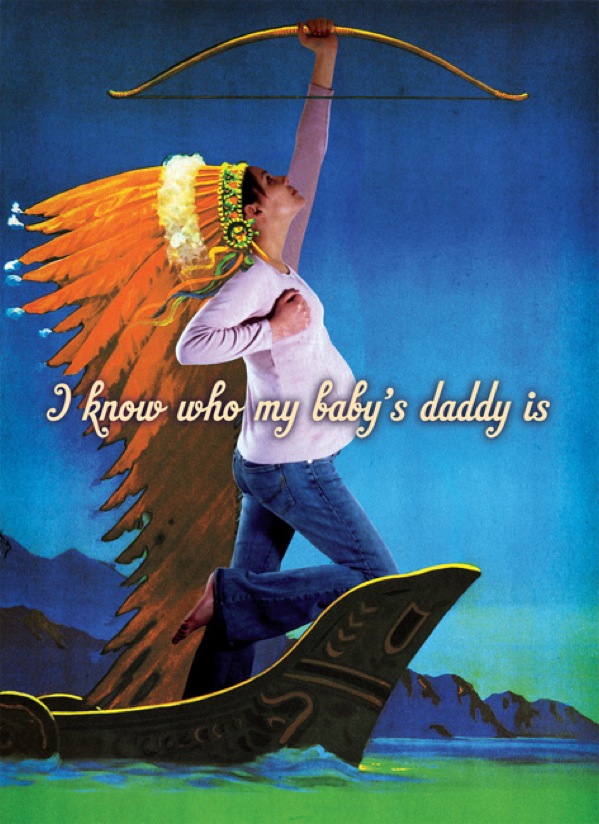
J o i T . A r c a n d
o s k i n i k i s k w é w a k
The series oskinîkiskwewak (young women, Plains Cree) explores stereotypical images of young First Nations women created by early twentieth century illustrators. Contemporary First Nations women have been digitally placed into the lavish landscapes and regalia of the original illustrations, thus reclaiming the image and replacing it with the strong, independent, intelligent women that they are. Images are mounted on aluminum.
Joi T. Arcand is a photo-based artist raised in her home community of Muskeg Lake Cree Nation, Saskatchewan and currently resides in Saskatoon, Saskatchewan. She received her Bachelor of Fine Arts degree with Great Distinction from the University of Saskatchewan in 2005. She has served as chair of the board of directors for Paved Arts in Saskatoon and was the co-founder of the Red Shift Gallery, a contemporary Aboriginal art gallery in Saskatoon.
Her work merges the personal with the political through the use of her own family history in addressing her own experiences as a mixed-race Cree/Metis woman. Drawing from her family narratives, Arcand’s photo work connects memory and landscape with humour and nostalgia. Her work has been exhibited at Gallery 101 in Ottawa, York Quay Gallery in Toronto, Mendel Art Gallery and Paved Arts in Saskatoon, grunt gallery in Vancouver, and published in BlackFlash Magazine.
Die Serie oskinîkiskwewak (Junge Frauen in Flachland Cree) untersucht die Stereotypen von jungen Ureinwohnerinnen, die im frühen 20. Jahrhundert von Illustratoren der Besiedler für Postkartenserien entworfen wurden. Heutige Ureinwohnerinnen wurden digital ersetzt in aufwendiger Landschaftsmalerei und ursprüngliche Insignien der Stämme der Prärie wurden eingebaut. Die Frauen wurden durch das Image der starken, erfolgreichen intelligenten modernen Frauen ersetzt.
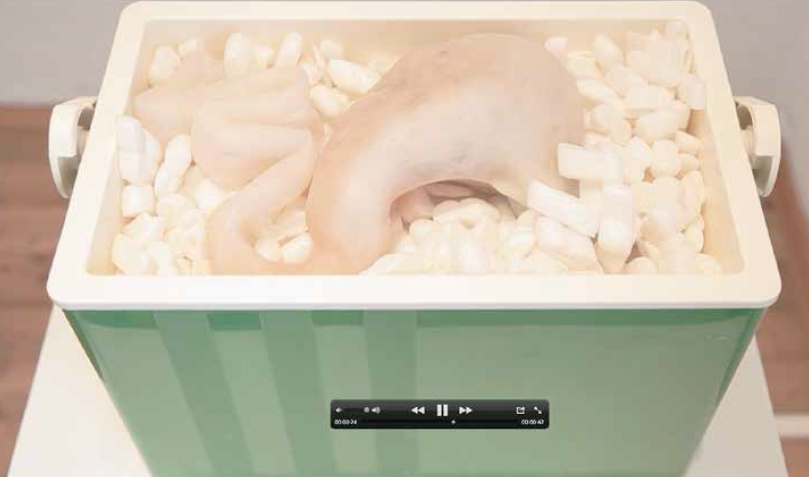
M a r i a G r ü n
ORGAN
Maria Grün works on sculptures and sculptural installations always circling the human body. Dysfunctions, fears, wondrous and hidden phenomena. „Organ“ (a cybernetic food-processor, object 2014) is a silicone stomach, eqipped with a motor, moving in intervalls. The object is bedded tenderly in styrofoam, in a coolbox.
Weird text lines of Ween songs as „Mutilated lips give a kiss on the wrist of the worm like tips of tentacles expanding in my mind, I‘m fine, accepting only fresh brine you can get another drop of this,…“ maybe let us see the body from the artists perspektive. Deforming, deconstructing and parting it, Maria Grün shows the body as surreal machine. In her hyperrealistic works she focusses on its surface: skin, veins, moles, hair, …and what’s rumbling inside.
Das Objekt „Organ“, ein kybernetischen Nahrungsverabeiter, stellt einen Magen dar. Es ist hergestellt aus Silikon, wurde mit einem Motor versehen, der inerhalb gewisser Intervalle auf Bewegungen programmiert wurde. Das Objekt liegt, eingebettet in Styropor, in einer Kühlbox. Surreal wird der Köper als Materie deformiert, zerstückelt, fragmentiert. Maria Grün zeigt den Körper als surreale Maschine. In ihren hyperralistischen Arbeiten setzt sie den Fokus auf die Oberflächenstruktur:
Haut, Venen, Muttermale.
Installation
coolbox, kinetic object, stomach, silicon, pigments, motor, motor noise
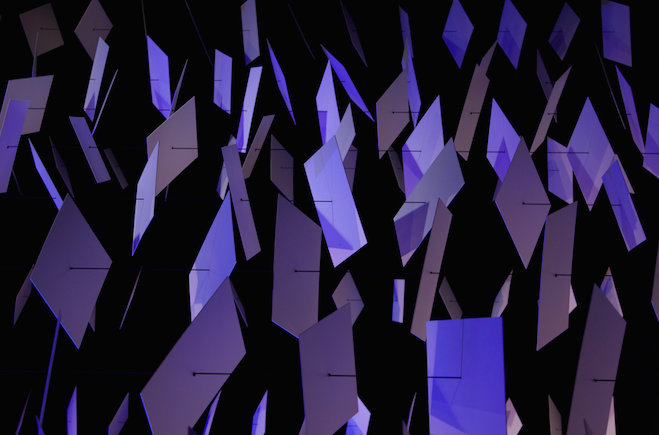
AG N E S H A M V A S
SIMULACRUM
In digital imaging, a pixel / picture element is a physical point in a raster image, or the smallest addressable element in an all points addressable display device. It is the smallest controllable element of a picture represented on the screen. The address of a pixel corresponds to its physical coordinates. Each pixel is a sample of an original image; more samples typically provide more accurate representations of the original. The intensity of each pixel is variable.
Based on the description of pixel Agnes Hamvas will built up a wall installation, on which parts of letters will appear. Considered from a distance, the small colored parts, pixels, generate a whole word.
Wandinstallation / Nägel, Faden, Farbe / Wall Installation /Nails, Thread, Color
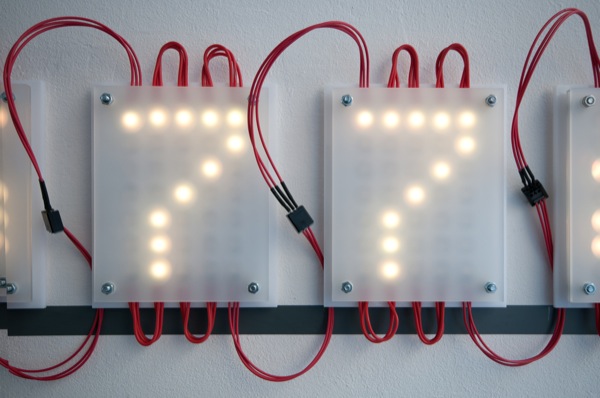 M i c h a e l K o c h
M i c h a e l K o c h
5 X 7 D O T – M a t r i x
Technical support by Markus Könnecke
This project deals with the daily surveillance as well as the new codices of the society of the 21st century. Some people believe that codes, created by big brands will replace laws and the traditional structures of our political systems. The artist Michael Koch deals with technical interventions and political requests combined with visual apperance.
He is actually not counting all bypassers at Schleifmühlgasse 12-14, who are hundreds a day, he further more selects the people, who slow down and try to get a glimpse of the artpieces inside of the window. At the end a evaluation will show up, how many bypassers are interested in art.
Dieses Projekt beschäftigt sich mit den täglichen Abläufen des Lebens. Mit Wiederholung die Menschen vollziehen ohne ihnen noch große Aufmerksamkeit zu schenken. Es wird der Versuch unternommen, Vorgänge die wenig bewusst passieren aber sichtbare Spuren hinterlassen, aus ihren tatsächlichen
Kontext herauszunehmen und sie wieder in einen neuen Kontext einzusetzen, diese Spuren werden im Rahmen einer Ausstellung wieder mit Bedeutung aufgeladen.
Zählmaschine & Video / Counter and Video (Screen)
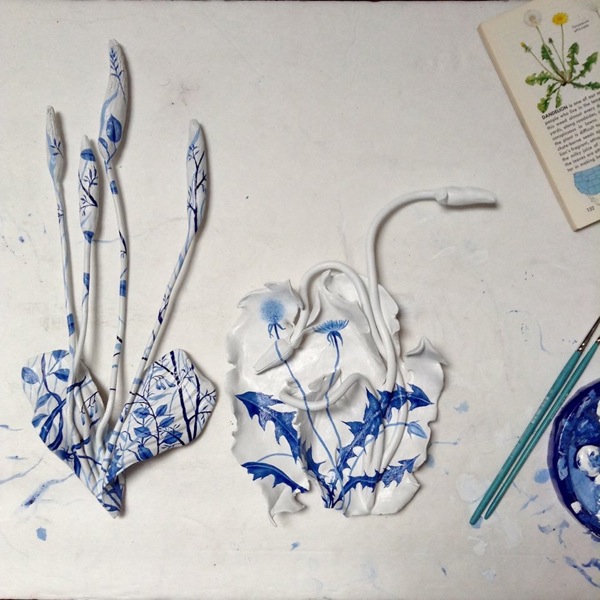 Z a c h a r i L o g a n
Z a c h a r i L o g a n
Equal parts figuration and landscape, Fountain encompasses ideas of absence. The absent body referenced through vitrified clay flowers hand-built to a naturalistic scale, adorning the structure like brittle-bone matter, intermingling with personal recollection of places visited. Monumental in its breadth, this is meant as an ambiguous cenotaph to memory, containing new sculpted flowers with each successive installation.
Fountain führt die Idee der Abwesenheit zu gleichen Teilen für Figuren und Landschaft ein. Der abwesende Körper nimmt Bezug auf die Struktur von Gebeinen des menschlichen Skeletts, durch die feine und naturalistische Ausarbeitung der Blumen und Blätter. In seinem Umfang erscheint der Brunnen mehrdeutiges monumentales Denkmal, welches neu gefertigte Keramikblumen mit jeder weiteren Installation.
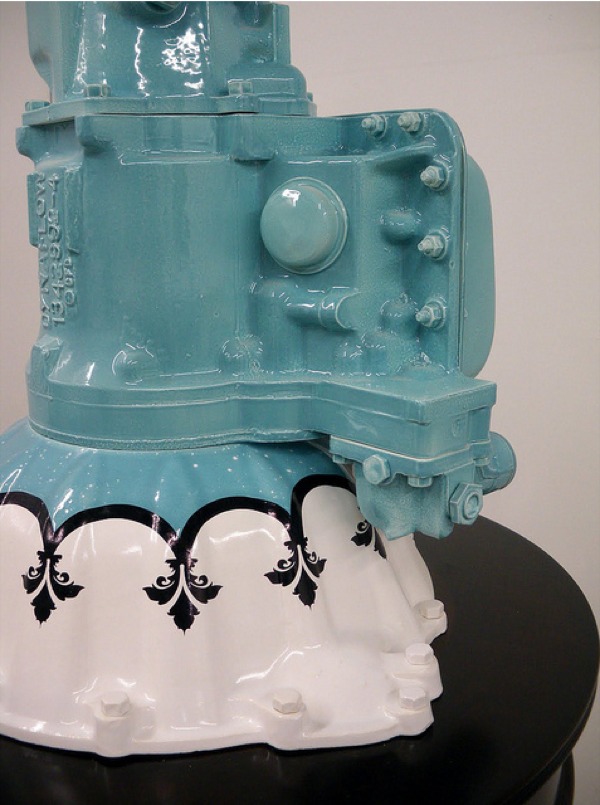
C l i n t N e u f e l d
T R A N S M I S S I O N
S E A B R E E Z E D Y N A F L O W 2
Clint Neufeld is a sculptor who works with concepts of masculine identity, currently in the form of ceramic transformations of engines and transmissions. Each sculpture starts out as a real engine, and in many cases Clint has to track down missing parts like the correct carbs or pulleys. He then cleans and disassembles the entire thing and casts each piece in clay, using a process called slip molding. Then, he glazes the individual parts with traditional tea-set glazes and patterns, hardens them in a kiln and reassembles the final engine for display.
Clint Neufeld ist ein Bidlhauer, der die Maskulinität der ursprünglichen Behauung von Steinen der doch eher weiblich konnotierten Keramik gegenüberstellt und absurd anmutende Maschinenteile in Keramik Objekte transformiert. Jede Skulptur beginnt mit dem Reinigen und auseinander bauen von reellen Maschinen.
Er erzeugt von jedem Element eine Form und giesst diese schweren Teile mit dünner Keramik, an Omas China Service erinnernd, nach. So transformiert er schwere, männliche Maschinenteile zu wundersam zarten und feinen Kunstobjekten.
Skulptur / Sculpture
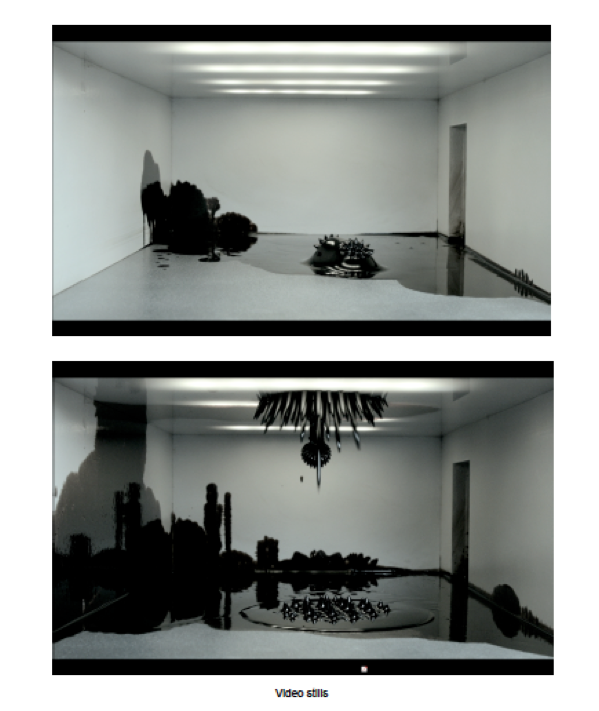
B e r n d O p p l i n c o o p e r a t i o n w i t h B o g o m i r D o r i n g e r
D A R K M A T T E R ( C A S E N U M B E R 2 ) 2 0 1 6
The project “Dark Matter” is the result of the collaboration between the two artists Bernd Oppl and Bogomir Doringer, specially organized for the Vienna Art Fair 2014. In this video work two researches are coming together. Bernd Oppl has been busy with investigation of architectural structure for quite some time and he represented small scale models as film sets. In his models surreal transformations are taking place. This time the designed room welcomes an alien looking sculptural form. That is one of possible structures created as ra esult of research on which Bogomir Doringer has been working since 2010. In his research he used military material ferrofluid as an artistic material and created sculptures of science fictional presence in real. It shows up that fiction is a temporary state. The presented artwork is an announcement, a teaser for a bigger scale project, on which these two artist will work together in a coming period.
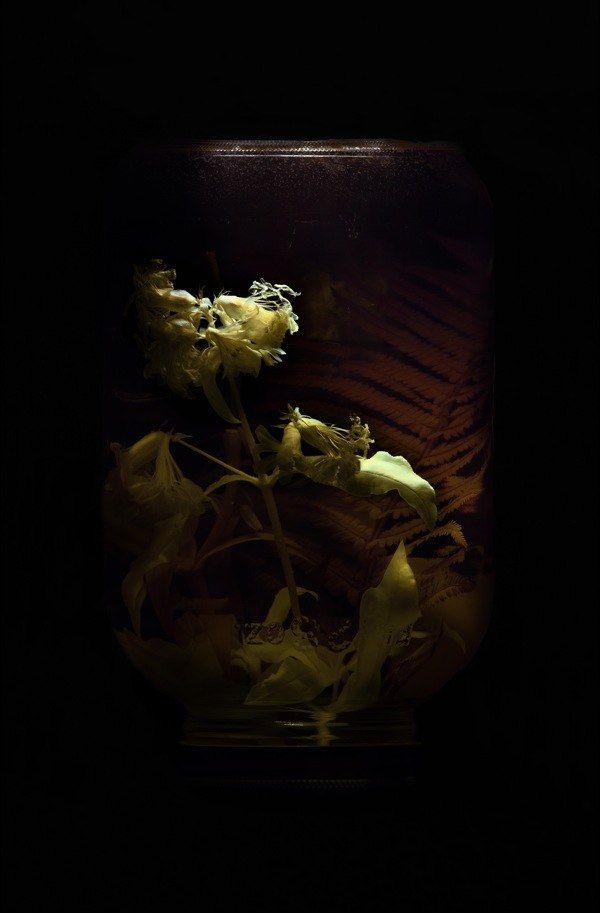 L a u r a S t . P i e r r e
L a u r a S t . P i e r r e
F r u i t s a n d F l o w e r s o f t h e S p e c t r a l G a r d e n , 2 0 1 4
The Scavenger’s environment is changing. Developers usurp green spaces and informal parks are disappearing. In the summers, large swaths of Saskatchewan are either burning or flooding, and the winters are now warm. In response to these changes, the Scavenger walks the city and collects common plants, flowers, tree branches, and weeds. Using a technique common to botanists, he preserves his specimens in pure alcohol. True to his nature, the Scavenger uses whatever glass containers are at hand; old canning jars, aquaglobes, wine bottles, vases. Each container represents a place that is important to the Scavenger, and is labeled with the name of a street, landmark or neighborhood that he frequents. So far there are hundreds of specimens.
Although this method of preservation preserves the plants’ three-dimensional form, the alcohol leeches the color from the flowers and leaves, creating ghostly versions of the specimens.
The Scavenger’s collection has been displayed and recorded in various forms, including photography, video and sculptural installation. These are all part of a work in progress titled Fruits and Flowers of the Spectral Garden. For the upcoming exhibition, I will show a new video piece. A specimen jar is depicted, and slow, hypnotic movement animates the contents. As with all of my collaborations with my imaginary character, the video translates three-dimensional matter into two-dimensional images. Mundane plants are transformed through lighting and composition, “making visible things that cease to be of any consequence once the picture has been snapped”[1]. For most people, none of these specimens are particularly interesting until light and the lens have translated them, and we begin to see as the Scavenger sees.
Im Juli erschien eine Kollektion von Einmachgläsern vor meinen Augen in einem kleinen Shop in der 20th Strasse. Dieses verstaubte Arrangement wurde von hinten beleuchtet und strahlte in der Dunkelheit. Für eine Show im September versammelte ich alte Diaprojektoren, Einmachgläser, Bildschirme und Rotationsmaschinen und stellte damit eine Installtation her. Einer der wichtigesten Aspekte in meiner Arbeit ist die Verbindung zwischen Skulptur und Photographie und das Spiel ziwschen Zweidimensionalität und Dreidimensionalität und die zusätzliche Veränderung durch Licht und dessen Reflexe. Bei der Ausstellung im AKA präsentiere ich eine neue Videoarbeit, die sich mit der Scavenger Collection beschäftigt. Im Film zeige ich ein hypnotisch rotierendes Einmachglas mit animiertem Inhalt. Das Video übersetzt dreidimensionale Objekte in zweidimensionale Bilder. Die Transformation der Natur, in der alles permanenten Veränderungen unterworfen ist, stelle ich der Transformation in der Animation gegenüber.
Video / Video
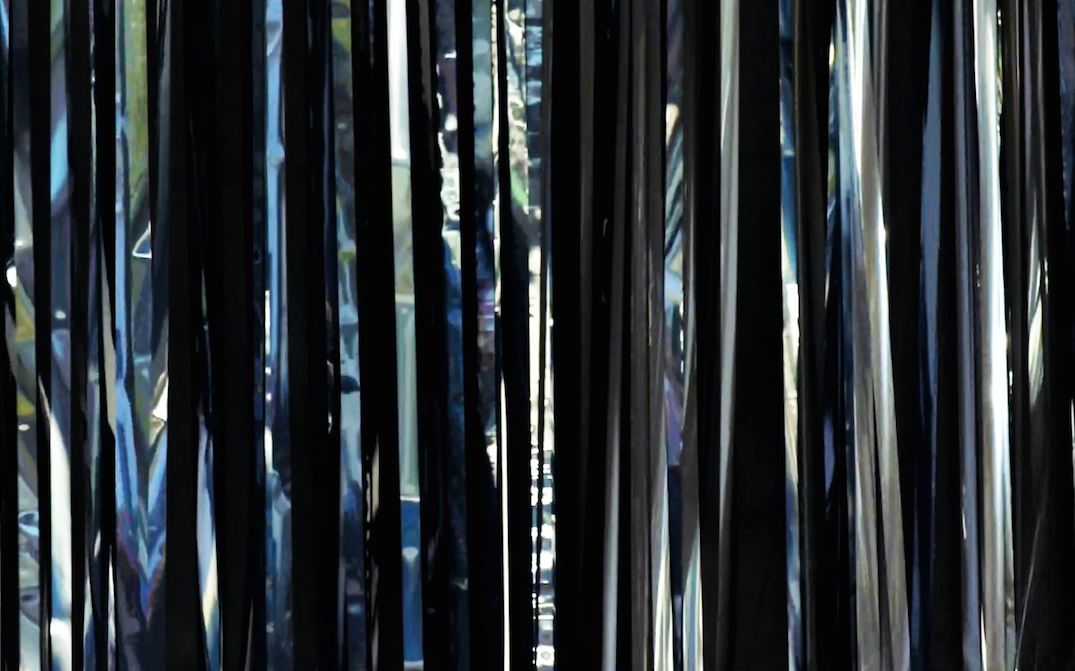 A s t r i d S o d o m k a
A s t r i d S o d o m k a
“packing for the island” / sequel of the video “gold”
Something happens to a a homogeneous quantity, transforming its appearance.
The video:
A curtain made of very light material (videotape) is floating in the air. In the video it forms an artificial surface that is moved by the wind – airstreams are visualized. The picture evokes associations with water. Glittering, undulation: it resembles its reflecting, ever moving surface.
In the subtitles or on the acoustic level a story is told / fragments of a story are told.
A possible flow-experience: Something sets off a string of incidents. It seems as if, at a certain point, it’s no longer you who decides. Decisions are no longer needed. Things appear as having to be done, next steps may happen and you let them.
In a flow something starts and continues, maintaining itself. Like in an autopoietic system, the experience of the flow is highly self-referential. In a flow information from the outside is filtered and used to keep the running system.
I‘m thinking of my work as providing fragments for the viewer to arrange.
I add and add and add.
Accumulating identical pieces: As I use to work with repetition, accumulating identical pieces is its possible visual representation. The reflecting quality of the material breaks its homogeneity. As in the storyline – fragments come to appereance.
The river is implying both: repetition and variation. Water is going down/by a landscape, repeatedly, continuously. After a while sediments settle and change the course of the current. The course of the river is never final.
Etwas verändert ihre Oberfläche einer homogenen Menge.
Sehr leichtes Material (Videoband) bildet eine Oberfläche, die vom Wind bewegt wird. Luftströme werden visualisiert. Assoziationen zu Wasseroberflächen sind gegeben. Glitzern, Wellenbewegungen, Reflexionen.
In den Untertiteln erscheinen Fragmente einer Geschichte. Eine mögliche flow- Erfahrung: Etwas setzt eine Kette von Ereignissen in Bewegung. An einem bestimmten Punkt bist es nicht mehr du, die entscheidet. Entscheidungen sind nicht mehr notwendig, nächste Schritte passieren einfach.
Im Fluss setzt sich etwas fort, das begonnen hat. Analog dem autopoietischen System, ist das Erlebnis des flows selbstreferentiell. Informationen von Außen werden gefiltert und zur Aufrechterhaltung des Systems verwendet.
flow: etwas kommt in Bewegung und hält sich selbst am Laufen
Astrid Sodomka fügt hinzu und hinzu und hinzu.
Die Akkumulation identischer Teile ist die visuelle Representation von Wiederholung. Die Homogenität der Oberfläche wird durch Lichtreflexe gebrochen. Einzelne Fragmente/Teile werden wieder sichtbar.
Der Fluss kann beides bedeuten: Wiederholung und Veränderung.
Wasser fließt durch die Landschaft, repetitiv, beständig. Über die Zeit setzen sich Sedimente ab und ändern den Lauf des Flusses, der niemals endgütig ist.
Video & Sound
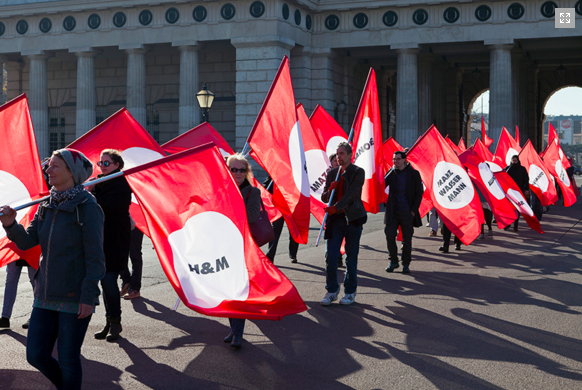
F r a n z W a s s e r m a n n
A N A R C H Y
HELDENPLATZ ANARCHY / When we are marching side by side is a political demonstration in form of an art performance. On October 31st 50 flag bearers will be traversing the Heldenplatz in Vienna. The design of the flags (red background, white circle in the center) refers to National Socialism. But in the historic version, one would find theHakenkreuz in the center of the flag. By contrast, Franz Wassermann shows the names of powerful companies and brands on this spot: google, Ikea, Monsanto, Black Rock,Deutsche Bank et cetera. Even Franz Wassermann´s own name will be presented on one of the banners.
HELDENPLATZ ANARCHIE / Wenn wir schreiten Seit an Seit ist eine politische Kundgebung in Form einer Kunstperformance. Am 31. Oktober lässt Franz Wassermann 50 Fahnenträger_Innen über den Wiener Heldenplatz marschieren. Die dafür eigens gestalteten Fahnen verweisen durch ihre Form (roter Grund mit einem zentral gesetzten, weißen Kreis) auf die Ästhetik des Nationalsozialismus. Doch an jener Stelle, an der in der historischen Variante ein Hakenkreuz sitzt, sind in Wassermanns Projekt die Namen großer Konzerne eingetragen: google, Ikea, Monsanto, Black Rock, Deutsche Bank et cetera. Auch Franz Wassermanns eigener Name wird auf einer der Fahnen präsent sein.
Photocredit Robert Fleischanderl
Video einer Performance im Öffentlichen Raum/ Video of the performance in public space 2015
Special Thanks to

![]()
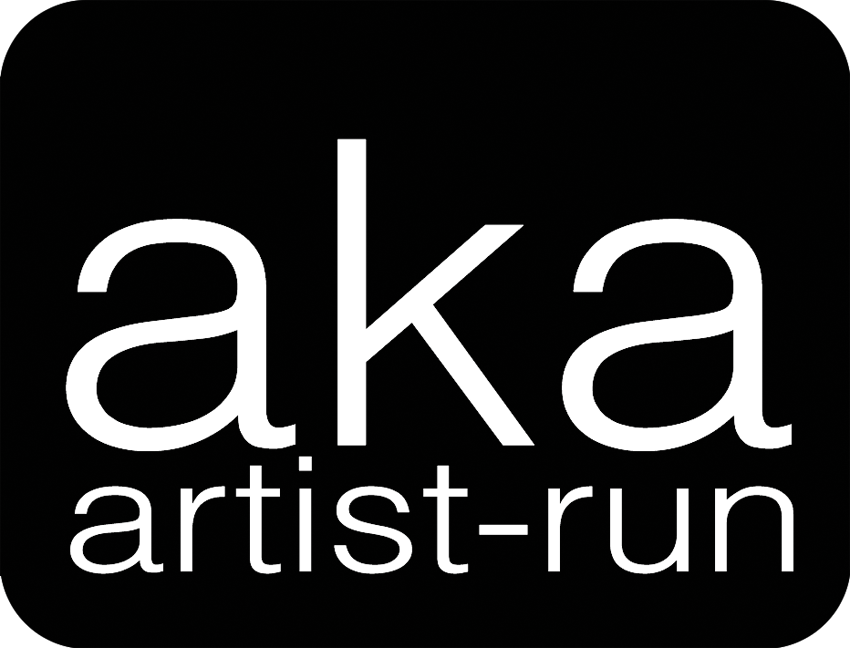
AKA artist-run, Kanderdine Gallery, Schleifmühlgasse 12-14 and the artists would like to thank the Canada Council for the Arts, Creative Saskatchewan, Austrian Cultural Forum Ottawa, BKA Kunst, the Saskatchewan Arts Board, SaskCulture, SaskLotteries.
